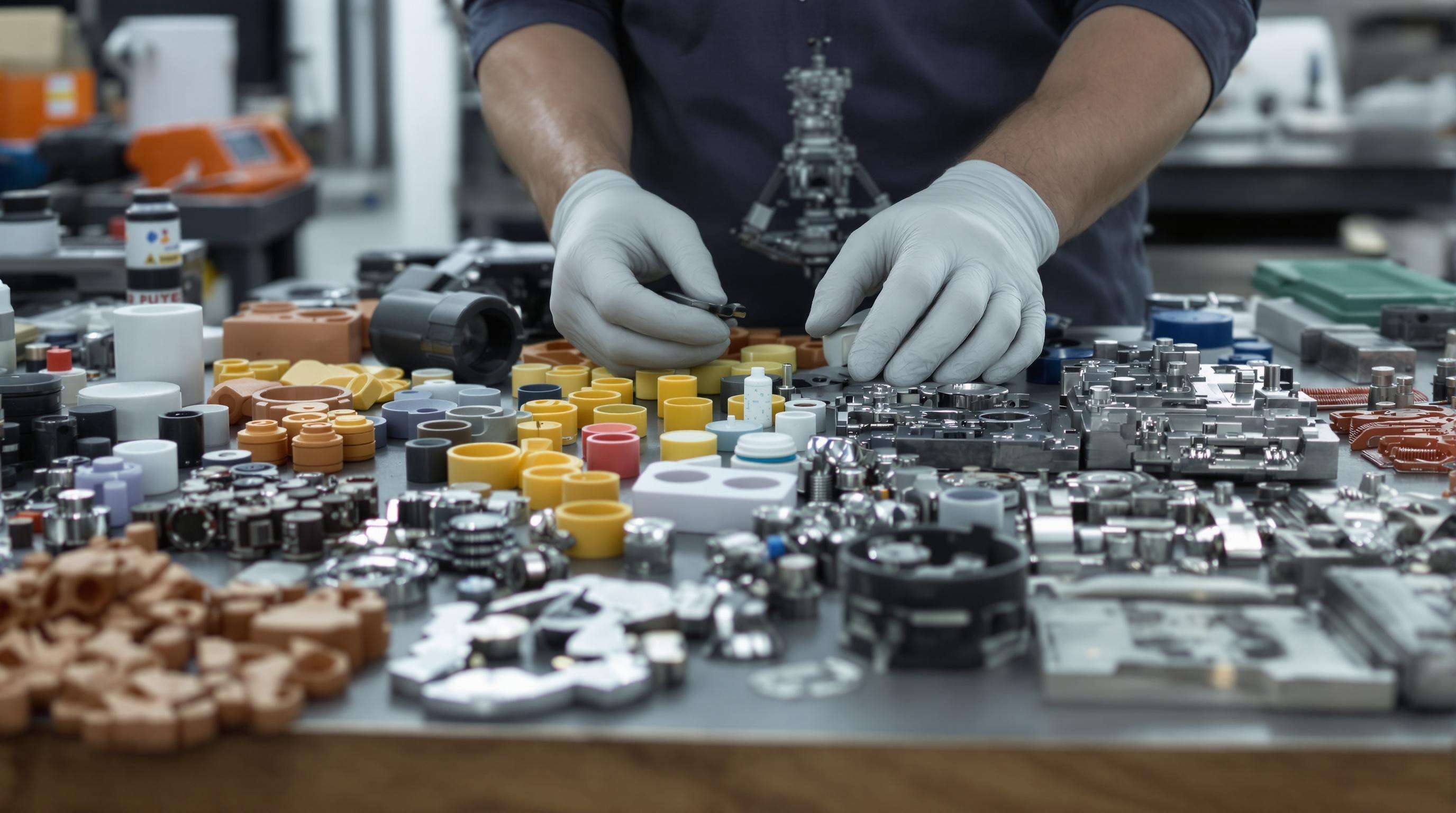Формовка выдувом продвинулась от ручной работы до автоматизированного процесса, который является ключевым аспектом массового производства. То, что в середине XX века начиналось как метод изготовления контейнеров с низким сопротивлением, превратилось в технологию, обеспечивающую точность на уровне микронов для сложных геометрических форм автомобильных топливных баков, медицинских изделий и компонентов авиационной техники. По данным отчета Plastics Engineering 2025 года, мировой рынок изделий из выдувных пластиков к 2023 году достиг $80,04 млрд и будет расти со среднегодовым темпом роста 7% до 2030 года, поскольку компании отдают предпочтение легкой и прочной упаковке.
Три инновации меняют масштабируемость:
Ведущие производители теперь интегрируют 3D-печать для быстрого прототипирования индивидуальных форм, сокращая сроки изготовления оснастки на 40%, сохраняя допуски менее ±0,05 мм. Это сочетание точной инженерии и умной автоматизации позволяет производственным линиям достигать годового объема выпуска более 50 миллионов единиц без ущерба для целостности конструкции или равномерности толщины стенок.
Формуляции полиэтилена высокой плотности (HDPE) обеспечивают на 18% более быстрые циклы производства при соблюдении точных допусков толщины стенок ниже 0,5 мм. Эти материалы демонстрируют на 30% более высокую устойчивость к растрескиванию под напряжением по сравнению с традиционными марками, что критично для автомобильных топливных баков и промышленных контейнеров, требующих серийного выпуска свыше 500 000 единиц.
Переход к циклическому производству увеличил использование переработанных потребительских смол (PCR) в технологии выдувного формования. Ведущие производители теперь могут достичь содержания PCR 40–60% в упаковочных материалах без потери прочности на разрыв или прозрачности. Оценка жизненного цикла на уровне 2024 года показывает, что такие устойчивые смеси снижают углеродный след на 22% на килограмм по сравнению с первичными материалами. Биополимеры, полученные из сельскохозяйственных отходов, набирают популярность; некоторые составы позволяют снизить энергопотребление при производстве на 18%.

С использованием промышленных датчиков IoT обеспечивается возможность реального контроля параметров процесса выдувного формования, таких как температурные градиенты и кривая давления. Благодаря этой информации в режиме реального времени можно выполнять корректировки на лету в течение производственных циклов, что позволяет снизить вариацию толщины стенок на 32% по сравнению с ручной регулировкой. Сложные системы автоматически подстраивают показания датчиков под климатические условия и различия в партиях материалов, сохраняя размерные допуски от одной отгрузки к другой. Заторы в производстве значительно уменьшаются, поскольку операторы реагируют на оповещения в течение 100 миллисекунд, устраняя потенциальные проблемы до возникновения дефектов.
Прогностические алгоритмы предсказывают ограничения на 72+ часа вперед посредством анализа исторических данных циклов, записей технического обслуживания и паттернов потока материалов. Эти системы сопоставляют скорости потребления смолы с возможностями производительности оборудования, таким образом выявляя риски усталости инструментов до их поломки. В ходе 17-месячного исследования автомобильной отрасли было установлено, что предприятия, применяющие прогностические модели, сократили незапланированные простои на 41% в год. Технология также имитирует возможные изменения в производстве, такие как колебания уровня влажности или пропорций переработанных материалов, чтобы пользователи могли перенастроить периоды, которые ранее вызывали сезонные замедления.
Глобальный поставщик автомобильных компонентов внедрил интегрированное цифровое управление на 8 заводах по производству изделий методом экструзионного формования, а также на заводах по выпуску топливных систем. Были настроены система отслеживания смол в реальном времени через экструзионные установки и анализ вибраций на серводвигателях, что позволило полностью прекратить остановки, связанные с материалами, в течение шести месяцев. В то же время кривые давления воздуха, созданные с помощью машинного обучения для сложных геометрических форм, сократили циклы работы пресс-форм на 28%. Эти улучшения в области промышленных технологий обеспечили доказанный рост объемов производства на 22% на устаревших системах — ежегодно добавляя $9,3 млн мощностей без дополнительных затрат на оборудование!

Экономика экструзионного формования зависит от компенсации затрат на оснастку за счет сокращения производственных расходов в течение срока реализации проекта. Современные системы оснастки требуют первоначальных инвестиций в размере от 120 000 до 500 000 долларов США и занимают 12–24 недели на изготовление сложных форм. Тем не менее, производители получают экономию на единицу продукции в размере 28–42% при объемах производства свыше 500 000 единиц, благодаря более коротким циклам производства и снижению отходов материала. Дублирование инвестиций в оснастку для высокоточных форм позволяет снизить затраты на каждую деталь на 34% и продлить срок службы инструмента на 19 месяцев, как показало исследование 2023 года среди поставщиков автомобилестроительной отрасли.
Основные факторы стоимости включают:
Результаты подтвердили, что при сроке эксплуатации 10 лет, формовка выдуванием дает на 18–31% меньше индекс совокупной стоимости по сравнению с литьем под давлением для производства деталей с множеством полостей. Литье под давлением осуществляется на прессах с точностью размеров ±0,05 мм по сравнению с ±0,15 мм у выдувания, оснастка для сушилок литьевого формования стоит на 45–75% больше при одинаковых объемах производства. По данным исследования Plastics Processing Study за 2024 год, формование выдуванием требует на 27% меньше энергии на единицу продукции, что позволяет экономить $1,2 млн в год на крупносерийных производствах.
| Фактор стоимости | Преимущество формования выдуванием | Преимущество литьевого формования |
|---|---|---|
| Первоначальная оснастка | на 38–52% ниже | Более высокая точность |
| Использование материала | на 22% меньше отходов | Лучшая отделка поверхности |
| Потребление энергии (на 1 млн единиц) | экономия 31 кВт·ч | Более короткие циклы |
| Гибкость модернизации | в 4,8 раза более быстрая смена | Ограниченные конструктивные ограничения |
Точка безубыточности для экструзионного формования наступает при 65 000–85 000 единицах в потребительской упаковке по сравнению с 110 000+ единицами для изделий, полученных литьем под давлением. Возможности послепроизводственной переработки дополнительно снижают экологические издержки экструзионного формования на 19 метрических тонн эквивалента CO₂ на производственную линию ежегодно.
Современные цепочки поставок при экструзионном формовании испытывают растущее давление, чтобы поддерживать объем производства, одновременно преодолевая нехватку материалов, сезонные колебания спроса и проблемы надежности оборудования. Проактивное выявление узких мест отличает эффективные операции от тех, которые страдают от дорогостоящих задержек.
Задержки с материалами составляют 34% незапланированного простоя при экструзионном формовании. Частыми причинами являются:
Системы отслеживания материалов в реальном времени теперь сокращают неточности сроков поставок на 63%, коррелируя дашборды поставщиков с темпами потребления на заводе
Семь ключевых поставщиков автопромышленности достигли 91% совпадения сезонного спроса благодаря следующим мерам:
Эти меры позволили среагировать на скачки спроса на упаковку в IV квартале на 40% быстрее, чем при использовании традиционных прогнозных моделей
Производитель лекарственных препаратов столкнулся с дефицитом производства на уровне 22% из-за дефектов отделки горлышка флаконов. Анализ корневых причин выявил:
Внедрение замкнутой системы теплового контроля и алгоритмов прогнозного технического обслуживания позволило сократить количество дефектов на 89% за 8 недель. Решение увеличило ежемесячный объем выпуска на 1,2 млн единиц продукции при соблюдении стандартов совместимости стекла ASTM E438-11.
 Горячие новости
Горячие новости2024-10-29
2024-09-02
2024-09-02

Авторское право © 2024 Changzhou Pengheng Auto parts Co., LTD